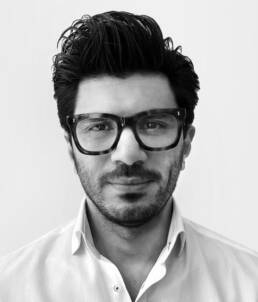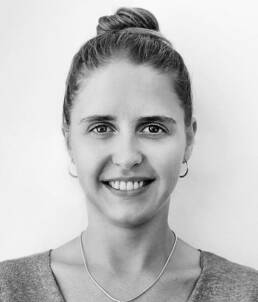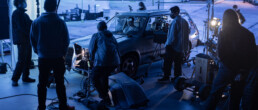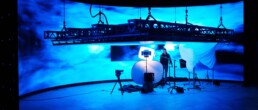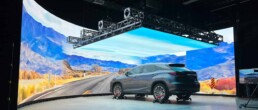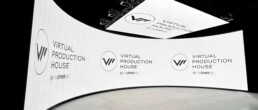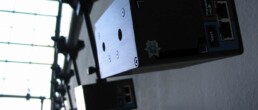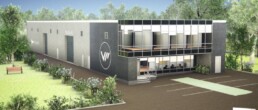Published on vfxexpress.com
Bringing accessibility and affordability to the biggest and boldest technology disruptor of the visual medium.
With its constant innovations and cutting edge deliveries, virtual production has made its way into the forefront of the film industry this year. With new teams and projects popping up around the globe, VFX Express recently had the opportunity to sit down with Founder and CEO Amir Endalah and his team from The Other End Inc., a creative collective and film & media production studio based in Toronto.
Over the past year, The Other End has developed a speciality of utilizing the newest state-of-the-art virtual production techniques and technologies, becoming one of the leading production companies offering virtual production solutions in the Canadian market. While venturing into new territory has been no easy task during the global pandemic, Endalah and his team have become trusted thought-leaders and collaborators within the Canadian market.
He is joined by The Other End’s Head of Operations, Karoli Grenman, as well as the company’s Virtual Production Supervisor, Kaveh Embrahimpour, in this interview.
Your company has been heavily involved in Virtual production, can you share some of your experience or some of the projects you worked on.
AE: We began exploring virtual production at the end of 2019 after witnessing the success of Disney’s The Mandalorian. Around the same time, Unreal Engine released an improved version of its game engine, and we came up with the idea to create an affordable virtual production solution for small and medium sized productions in Toronto.
We knew it was going to be an ambitious project with a steep learning curve because we were the first company in Toronto to attempt establishing the full cycle of a workflow from ideation to execution. A few other players were in the process of testing UE environment designs and LED panels, but a proven workflow was missing from the market. It’s absence inspired us to invest in a team to establish a blueprint.
As you can imagine, this all began to unfold as the pandemic spread which made it difficult to to collaborate with other organizations and forced us to rely on our internal resources. After a few months of hard, remote work, and after a few restrictions were lifted, we pulled off the first virtual production shoot to successfully test a full cycle workflow at Pinewood Studios in Toronto.
Since then, we have been maintaining our lead in the local market and continuing to build on the improvement of our workflow through partnerships with institutions, producers, and tech providers. We have also started consulting other companies and studios on their own VP setups. There are a few exciting projects in the pipeline for early 2021 which will be announced in due time.
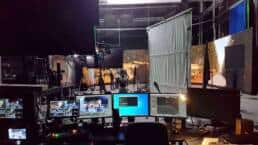
Can you explain what Virtual production is for those who are new to the VFX/media industry?
AE: Very simply, I see virtual production as another mode of producing content in which the virtual world meets physical movie sets. This can involve either green screens or LED walls. My colleague, Kaveh Ebrahimpour, brings the term a little more justice.
KE: Although it has a wide range of definitions within the industry, I can confidently say that virtual production is the modern approach to content creation. It is the same special effects that we have been using in film and media but updated and in real-time. It’s where live-action plates are composited with VFX, animation, and environments produced in Unreal Engine to create finished shots right out of the camera.
What made you get into Virtual production and what were the challenges you faced in the process?
AE: We were operating as a traditional production company when we began integrating virtual production technologies just as the pandemic hit. It obviously brought with it many complications, but we saw the opportunity to restructure and pivot to develop deeper virtual production capacities. We set off on a journey to provide enhanced creative freedom in a safer, faster, and controlled environment, while offering a cost effective workflow.
The biggest challenge in all this was to find the right starting point. The process is very expensive and there is no given framework on steps to take, so we needed to conduct an excessive amount of research and testing in order to create a workable roadmap for the team. Finding technicians and talent who are familiar with the virtual production set up and real-time workflow proved to be another major challenge. The amount of flights that were grounded also slowed down shipments and made the process a lot more timely.
KE: Well, the whole thing was a real learning curve for us. And we are still learning because it’s so new and there’s not a blueprint out there that we can take and say this is our cookbook and okay we’re doing that and that, and that. We had to build our own recipe from the beginning. And that is the main obstacle for us in this R&D. But, overall it was awesome.
AE: Overall we’ve been incredibly lucky to have such a dedicated team and fantastic partners who have believed in our vision and encouraged us throughout this journey. We wouldn’t be where we are today without their generous support.
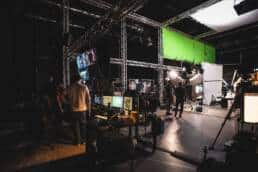
Everybody is saying that Virtual production is the future of filmmaking, what is your take on that?
AE: Filmmaking is such a broad term and profession that includes so many styles, so I think it’s really hard to blanket virtual production over it all. But yes, I absolutely think it’s the future! Technology isn’t able to produce authenticity, but it can create high-quality photorealistic imagery – adding value, ease, and efficiency to many genres of filmmaking.
Can you briefly explain the process of Virtual production?
AE: The camera is equipped with a tracker that is sending its location to the game engine at all times. The engine then generates the pre-constructed 3D environment from the correct point of view in relation to the camera and feeds it into the LED volume so it is projected interactively on the panel wall. It’s like putting VR goggles onto a camera lens. Your camera enters a virtual world.
KE: It’s unique because imagine if you want to shoot in a subway station that is empty and you don’t have permission from the government. Or, you want to shoot your talent over a cliff and you don’t have the proper insurance or stunt – you can do all these things with virtual production in a studio, and that’s awesome.
How are filmmakers benefiting from Virtual production?
AE: In addition to enhancing creative freedom, reducing time, and cutting budgets, on a more technical level, virtual production allows shots to be displayed with real-life lighting and accurate reflections. The realistic environment allows talent to perform more genuinely, and the director is able to witness the results in real-time rather than waiting through the tedious phase of post-production.
KE: The exciting part is that there is no limit for anything. You just have to imagine what you want to choose, and you can then do that.
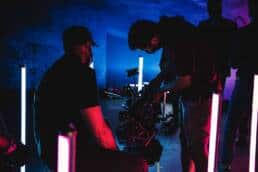
How is Virtual production different from traditional filmmaking?
KG: At its core, virtual production is similar to traditional filmmaking in that it’s trying to enhance the experience of storytelling. The main difference is in the way it’s achieved. Virtual production is pushing the boundaries to create worlds or viewpoints that haven’t been seen or explored before.
The question from almost all visual effects artists is “Will Virtual production replace visual effects jobs?” What is your view on that?
AE: I don’t think so. Virtual production isn’t replacing the current workflow but basically rearranging the existing filmmaking flowchart. We are moving most of the post-production workload into pre-production, and still need visual effects artists to build the same environments and animations. With virtual production, “fix it in post” becomes obsolete.
Can an entry-level artist get into Virtual production? If yes, what should he/she have in their skillset?
KG: Absolutely, yes. It’s not only possible, but hugely beneficial to both the artist and the creative team. Because virtual production is a relatively new production practice with constant advancements being made, there is a limitless potential for rapid skills development and becoming a leading expert in the field. The Other End is composed of a cross-industry team with varying ages and experience levels. We even have a few recent graduates in core positions on the team – which we would argue sets us apart from our competitors and gives us an added advantage in navigating such an innovative space.
How can one reach out to you or your company?
KG: It’s at our core to keep up with the ongoing developments in the virtual production world and to make it more accessible and affordable to everyone. We’re always keen to collaborate with like-minded individuals and organizations within the creative space and to share our knowledge with those starting out on their virtual production journeys. If you’re interested in exploring the possibility of working with us, get in touch at info@theotherend.ca and we will be happy to kick off the conversation.
Any final quotes or advice you wish to give our audience?
AE: If you’re thinking of getting into virtual production, now is the time to do it! But give yourself the time to find trusted partners, get the right consultants, and think about what makes you and your team different from your competitors. Draw your own box, and set new limits.
